If your product feed is just “something ops manages,” you're already losing performance.
Shopping campaigns, Performance Max, and Meta Advantage+ — they all run on feed inputs. What gets shown, where it shows, and how it’s bid all trace back to the quality of your product data. If your feed’s wrong, your campaign logic is broken before a single impression.
Most feeds don’t fail loudly—they fail quietly
This is the part that trips most marketers up: feeds can look clean in diagnostics and still sabotage performance.
You’ll see all green in Google Merchant Center. Meta Commerce Manager won’t throw a single error. Everything looks fine—until you realize your best sellers aren’t showing, your ads are full of low-margin variants, or your PMax campaigns are feeding the wrong asset group.
What’s really going on? Poor data structure, missing attributes, and unmanaged variants. Not disapprovals—just bad logic.
Let’s walk through where feeds usually break, how to fix them, and how to build feed logic that actually supports campaign strategy.
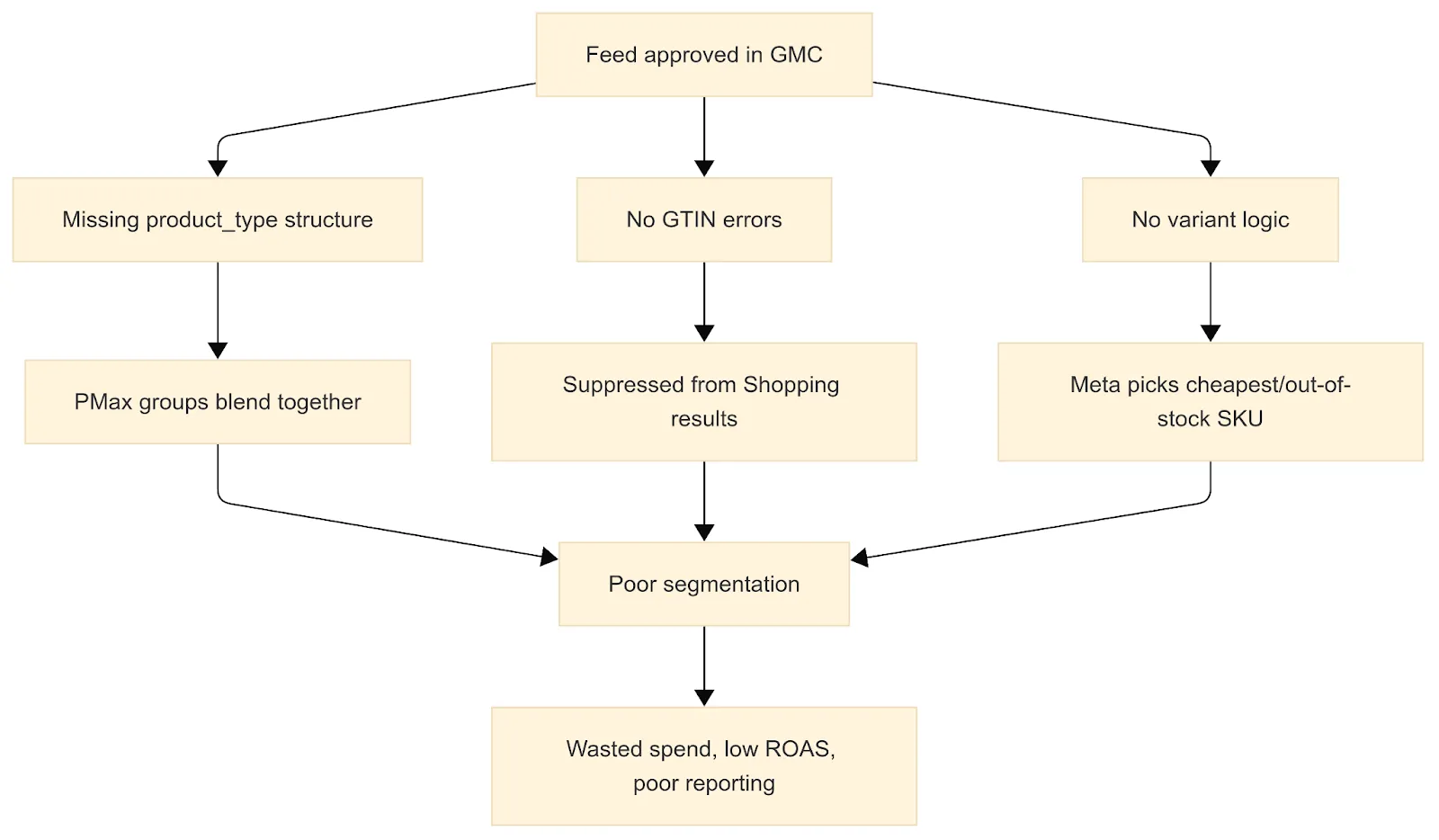
The feed is your campaign—stop treating it like a backend task
Campaign structure and feed structure need to speak the same language.
But in most accounts, you’ll see flat or irrelevant product_type values, generic custom_label logic, and titles stuffed with duplicate attributes. It all passes review, but it doesn’t support segmentation, bidding, or creative mapping.
Where this breaks: Say you're running Performance Max with asset groups segmented by product category. If product_type isn’t cleanly structured—say, it's just "Shoes" across 1,200 SKUs—Google doesn’t know how to split signals across the groups. The campaign ends up treating all shoes the same, from clearance sandals to top-margin boots.
How to fix it: Use GoDataFeed rules to map your source data into a tiered taxonomy like:
product_type:
Footwear > Women's > Boots
Footwear > Men's > Sneakers
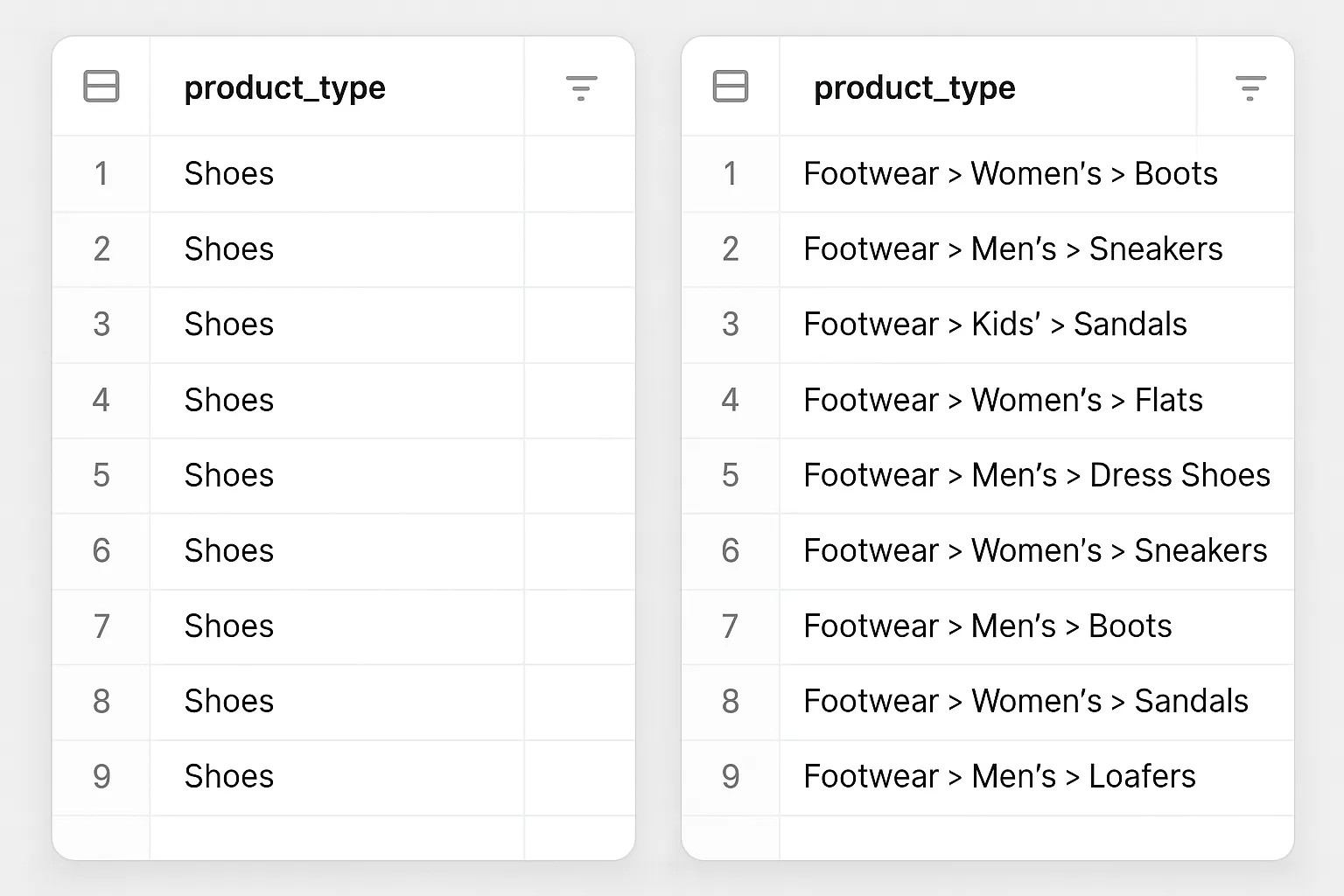
This gives Google structure to work with—and gives you control over how products are grouped, reported, and optimized inside PMax.
Using structured, tiered product_type taxonomy isn’t just best practice—it’s achievable with rule logic. GoDataFeed’s feed rule guide walks through mapping these hierarchies efficiently.
What you don’t fix in the feed, platforms fix for you—badly
Platforms don’t wait for perfect data. They make assumptions. And those assumptions are rarely in your favor.
Where this breaks: On Meta, if structured variant info (color, size, item_group_id) is missing, the system defaults to the cheapest SKU. Optimizing your Facebook feed ensures your top-selling variants surface instead of low-relevance products.
How to fix it:
- Make sure each variant has complete data: variant_id, color, size, and accurate inventory.
- Use GoDataFeed’s override rules to set a "hero" variant as the primary item and suppress the noise SKUs that don't convert.
- Confirm structured attributes match across Meta's requirements (ex: availability, condition, brand, item_group_id) to keep the catalog logic clean.
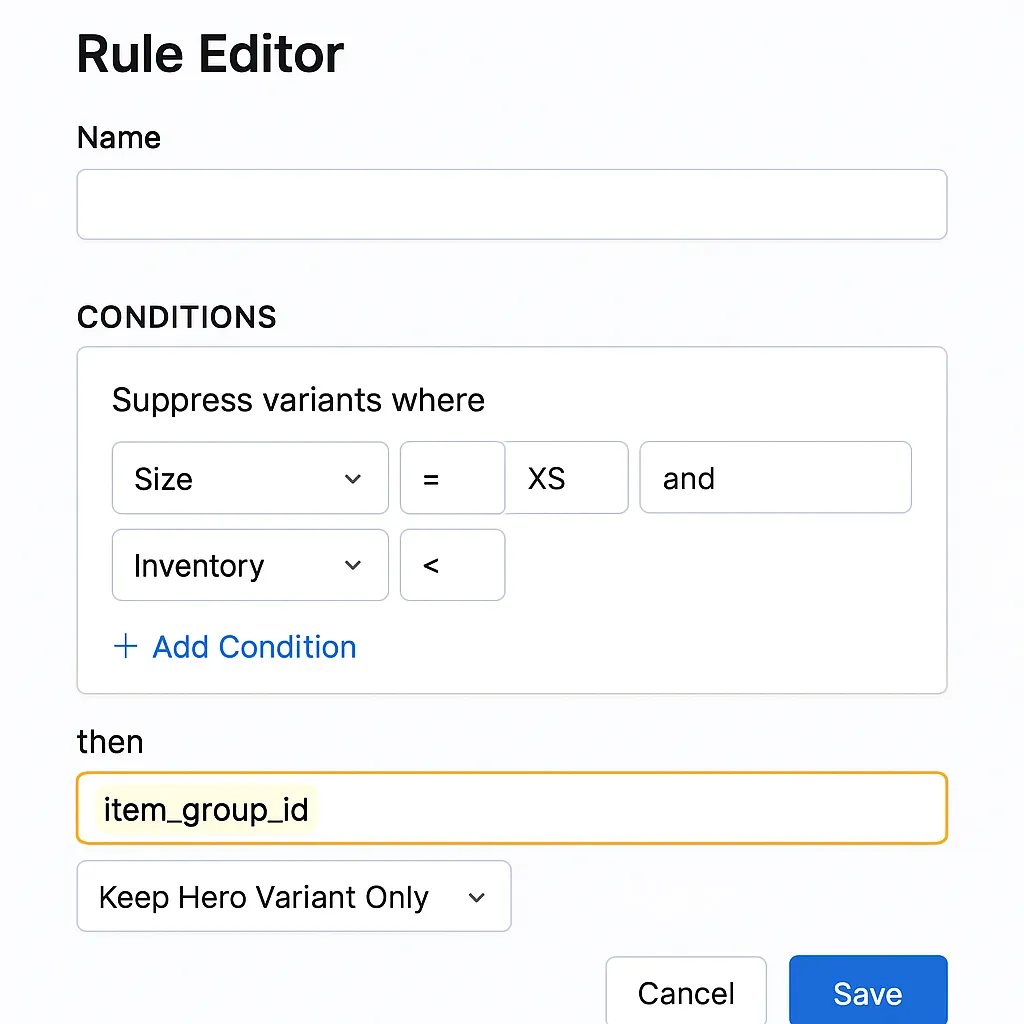
You don’t want to leave Meta guessing which variant to show. That’s how you burn spend on the wrong products.
Feed errors aren’t just red flags—they’re disqualifiers
If your SKUs disappear from campaigns, chances are the feed is failing silently.
Where this breaks: One of the most common killers is a GTIN mismatch. You’ve got a product that’s listed on marketplaces with a different GTIN than what’s in your Google feed. Result? Disapproval. Or worse—your product is listed, but Google suppresses it from Shopping results.
How to fix it:
Use GoDataFeed’s diagnostics or GMC’s “Item Issues” tab. Filter by:
- Incorrect product identifiers
- Missing GTIN
- Item not eligible for Shopping ads
Set up a rule that pulls GTINs from a reliable source (ERP or PIM), then pushes overrides to correct values at the feed level. If you can’t resolve a conflict, suppress the item until you do—don’t let one mismatch hurt your account health.
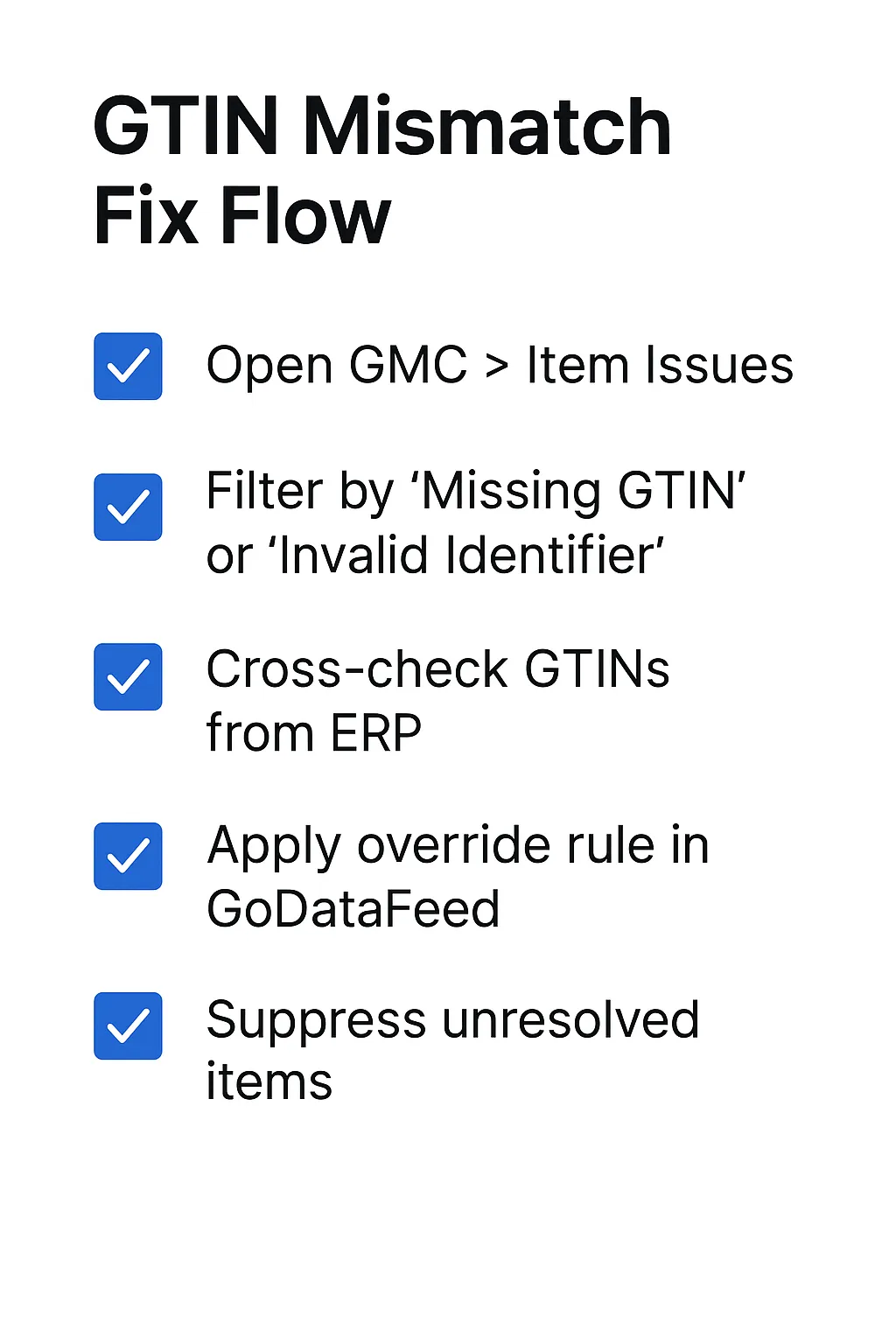
Custom labels aren’t optional—they’re how you control strategy
This is one of the most underused fields in product feeds—and one of the most powerful.
Where this breaks: If you’re running Smart Shopping or PMax and don’t segment using custom_label, you're stuck treating every product the same. Clearance and full-price items, low- and high-margin SKUs—all bidded the same.
What to do instead:
Create custom_label_0 to segment products by lifecycle or margin:
- Evergreen
- New Arrival
- Clearance
- Top Margin
- Low Margin
Rule:Set Clearance Label
IF price < [original_price]
AND inventory_age > 60
THEN custom_label_0 = "Clearance"
In GoDataFeed, you can create rules like:
IF price < [original_price] AND inventory_age > 60
THEN custom_label_0 = "Clearance"
Now you can segment campaigns, control bidding, and report cleanly—without having to rework your catalog source.
Feed logic becomes campaign logic—and vice versa
Your campaigns and feeds should evolve together. As you restructure campaigns, splitting out categories, testing new bidding strategies, or layering audience signals—your feed needs to reflect those changes in real time. Otherwise, you’re feeding outdated or generic data into a campaign structure that demands precision. The tighter your feed aligns to campaign segmentation, the cleaner your signals, bidding efficiency, and reporting clarity.
Where this breaks: Let’s say you split Performance Max into category-specific campaigns. But you never update product_type or custom_label to reflect those new groupings. Google’s signals are still bundled. You’re segmenting campaigns but feeding them the same soup.
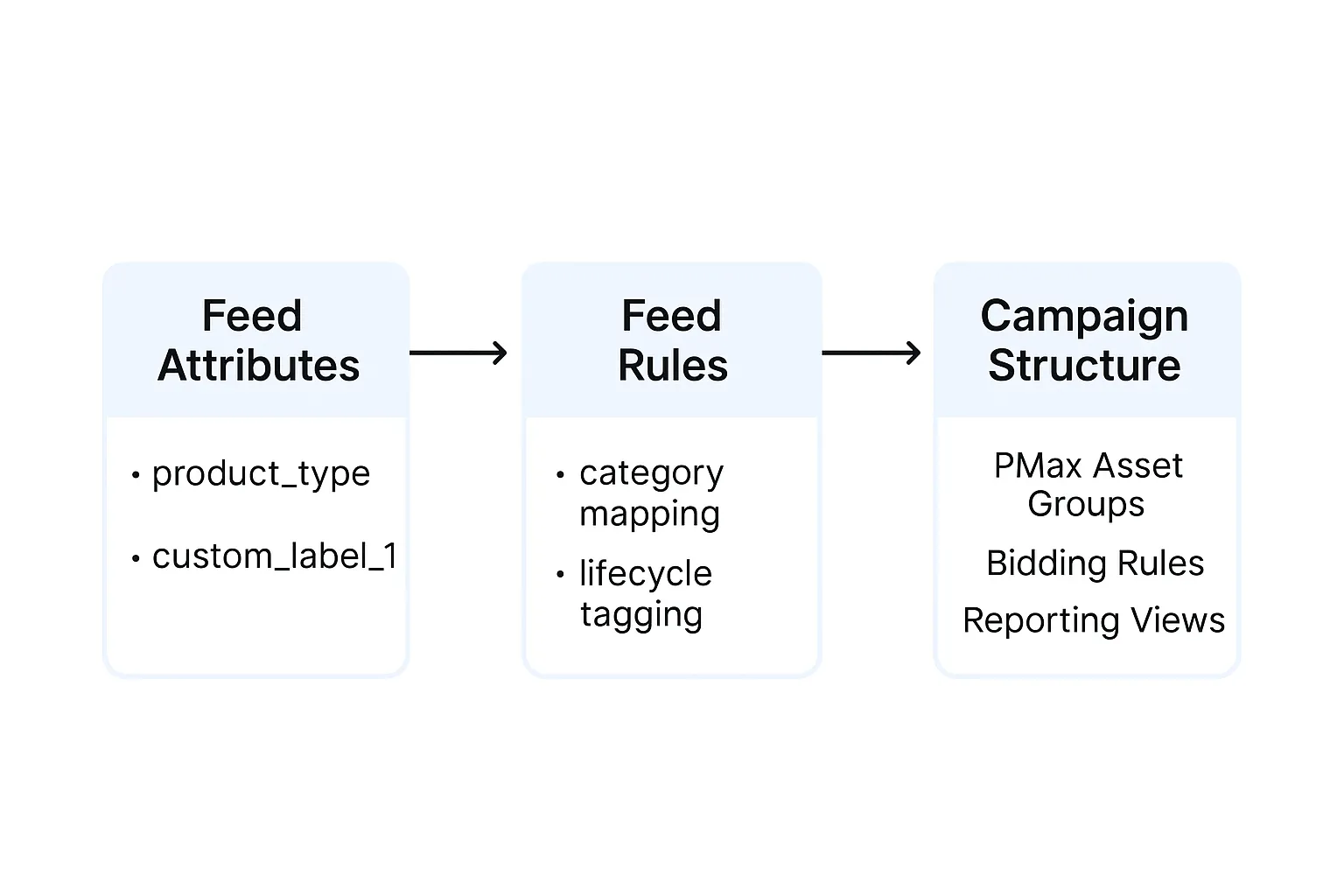
How to fix it: Mirror your campaign logic in the feed. If you break out categories in PMax, map those categories in product_type or a custom_label. That way, you can align asset groups, creative, bidding, and reporting.
In GoDataFeed, maintain a master campaign mapping rule:
IF product_type CONTAINS "Boots"
THEN custom_label_1 = "PMax_Boots"
This helps you route products to the right asset groups and segment performance reporting without manual filters.
Build your feed for flexibility—not just approval
Don’t just fix errors. Build feeds that support campaign goals. A feed built only for compliance will pass diagnostics but won’t adapt when pricing, promotions, or campaign structures change. Flexible feeds integrate rules, overrides, and dynamic mappings so you can pivot offers, launch flash sales, or adjust segmentation without waiting on dev tickets or risking disapprovals.
Where this breaks: Say you’re running a flash sale. You update pricing in your backend, but the feed doesn’t sync until the next day. Your Shopping ads are now showing the wrong price, and Google flags your account for a pricing mismatch.
How to fix it:
- Set up GoDataFeed to pull source data multiple times a day (hourly if needed).
- Use rules that automatically suppress SKUs with low stock, outdated prices, or missing promo text.
- Build feed filters that adapt to tags or inventory status from your ecommerce platform.
Think of it like a campaign DevOps. Your feed should move as fast as your offers and pricing.
For a deeper dive into aligning your feeds with AI-powered shopping platforms, explore GoDataFeed’s AI‑driven product feed optimization strategies.
Bottom line: Your product feed is your campaign performance
You don’t get clean segmentation, smart bidding, or relevant ads without the feed doing the heavy lifting.
The best marketers treat feeds like strategy infrastructure, not a backend task to outsource. Because once the wrong data hits the platform, it’s already too late.
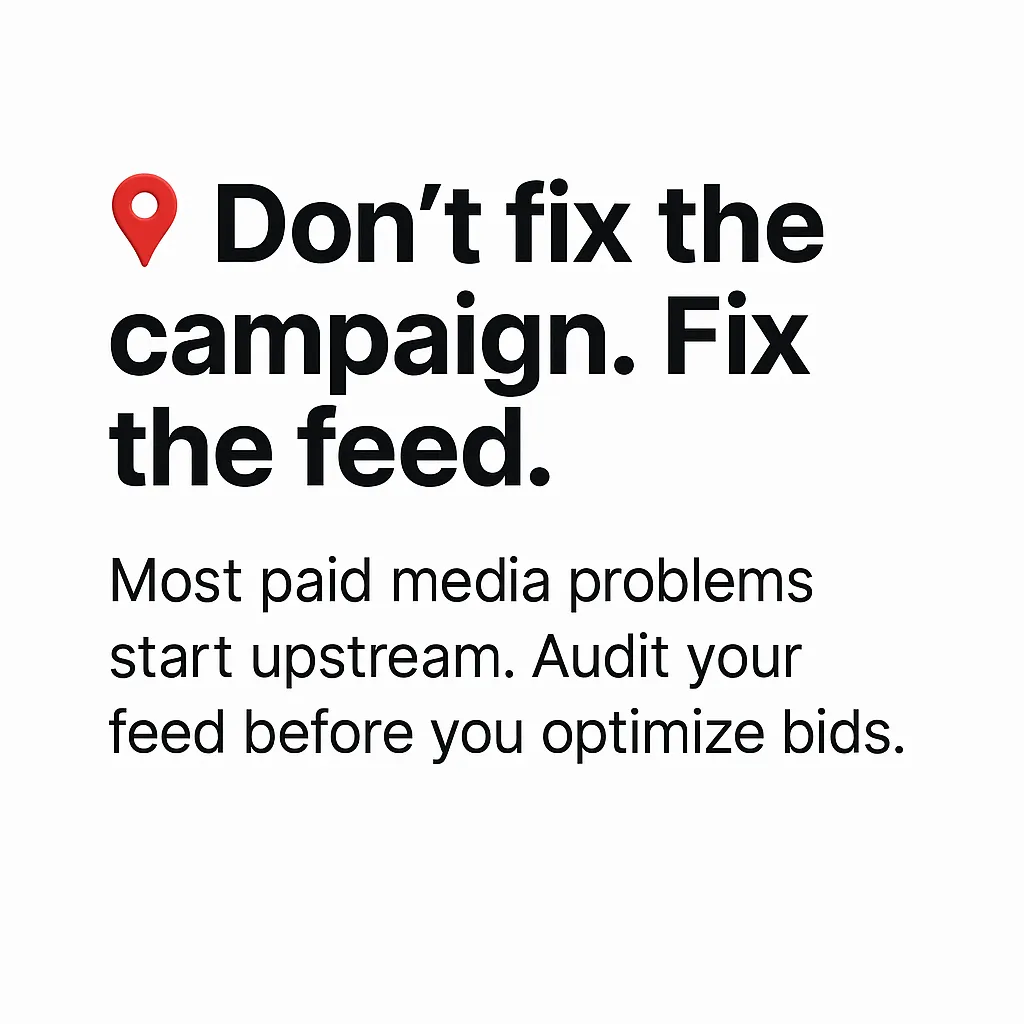
Your next move: Pull your top 100 SKUs in Google Merchant Center. Check product_type, GTIN, custom_label, and variant fields. Then ask:
- Are these products showing up the way you want?
- Are they grouped and bid on the way you planned?
If not, start fixing the feed—not the campaign.
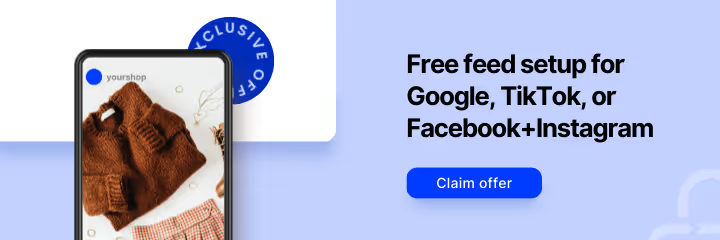




%20).webp)